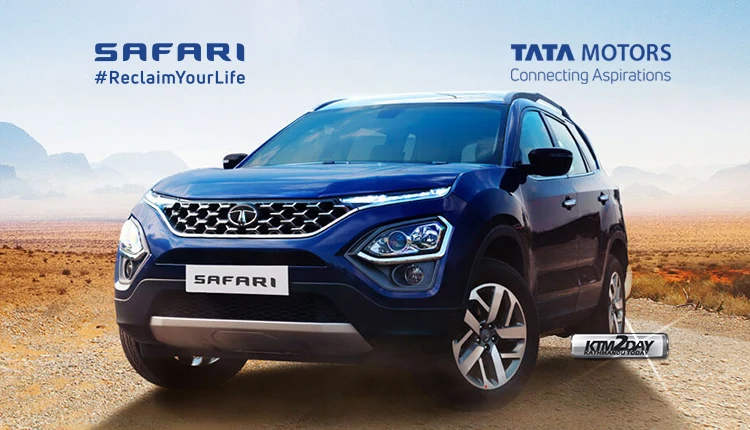Tata Harrier EV vs Mahindra XUV 9EV – Complete Comparison of India’s Premium Electric SUVs


Introduction
The Indian automotive market is witnessing a major transition toward electrification. With key players like Tata Motors and Mahindra & Mahindra aggressively entering the EV space, the spotlight is now on two of the most anticipated electric SUVs: the Tata Harrier EV and the Mahindra XUV 9EV (likely the production version of the BE.09 or XUV.e9). Both SUVs represent the brands’ premium offerings in their respective electric vehicle lineups.
As an automobile engineering expert, here’s a detailed technical and design-oriented comparison between the Tata Harrier EV and the Mahindra XUV 9EV.
1. Platform & Architecture
Tata Harrier EV
- Platform: Gen 2 EV architecture derived from OmegaArc (Land Rover D8-based)
- Adapted For: Electrification with redesigned floor for battery pack
- Drivetrain: All-Wheel Drive (AWD) with dual motor setup expected
Mahindra XUV 9EV (XUV.e9)
- Platform: INGLO (INdian GLObal) skateboard platform
- Adapted For: Pure EV from ground up with flat floor and modular battery integration
- Drivetrain: Dual-motor AWD with advanced torque vectoring
Verdict: XUV 9EV has the edge with a native EV platform, allowing for better weight distribution, cabin space, and performance efficiency.
2. Powertrain & Performance
Tata Harrier EV
- Motors: Dual motors (speculated)
- Horsepower: Estimated 280–300 hp
- Torque: ~400–450 Nm
- Acceleration (0–100 km/h): ~7–8 seconds
Mahindra XUV 9EV
- Motors: Dual motors with AWD
- Horsepower: 335–390 hp (250–290 kW as per Mahindra)
- Torque: ~600 Nm
- Acceleration (0–100 km/h): ~6 seconds
Verdict: The XUV 9EV promises superior raw power and torque, thanks to its high-output dual motors. This will appeal more to performance enthusiasts.
3. Battery, Range & Charging
Tata Harrier EV
- Battery Size: Estimated 60–70 kWh
- Range: ~450–500 km (IDC/ARAI)
- Charging: DC fast charging supported, ~0–80% in under 45 mins
Mahindra XUV 9EV
- Battery Size: Up to 80 kWh (LFP chemistry)
- Range: 500–550 km (WLTP expected)
- Charging: 175 kW fast charging, 5–80% in under 30 mins
Verdict: The XUV 9EV again leads with a larger battery, faster charging capability, and superior real-world range.
4. Exterior Design & Dimensions
Tata Harrier EV
- Design: Evolution of ICE Harrier with EV-specific accents, closed grille, LED DRLs, and futuristic lighting
- Dimensions: Length ~4600 mm; muscular, upright stance
Mahindra XUV 9EV
- Design: Sporty coupe-SUV styling, aggressive aero elements, sleek LED light bar, futuristic alloys
- Dimensions: Length ~4700 mm; wider and lower stance
Verdict: If you prefer bold and muscular, Harrier EV will suit you. If you’re drawn to futuristic coupe aesthetics, XUV 9EV takes the crown.
5. Interior, Technology & Features
Tata Harrier EV
- Display: 12.3-inch infotainment, 10.25-inch digital cluster
- Features: 360-degree camera, panoramic sunroof, ventilated seats, JBL audio, wireless charging
- ADAS: Level 2 ADAS with adaptive cruise, lane assist, etc.
Mahindra XUV 9EV
- Display: Triple screen setup (infotainment, cluster, passenger display)
- Features: Sustainable materials, HUD, AR navigation, advanced telematics
- ADAS: Enhanced Level 2+ with possible OTA upgradability
Verdict: XUV 9EV offers a more premium cabin experience with tech-focused interiors and future-ready ADAS stack.
Price Expectations
Tata Harrier EV: ₹28–32 Lakhs (ex-showroom, expected)
Mahindra XUV 9EV: ₹32–36 Lakhs (ex-showroom, expected)
Verdict: The Harrier EV may be the more affordable option, but the XUV 9EV justifies its higher pricing with a next-gen platform and more power.
7. After-Sales & Ecosystem
Tata Motors
- EV Network: Tata.ev ecosystem with growing charging infra via Tata Power
- Warranty & Support: Well-established EV service network (Nexon EV legacy)
Mahindra
- EV Network: Under development; Mahindra has tied up with various global partners
- Warranty & Support: Early stages of EV support, but growing fast with new retail experience zones
Verdict: Tata has a stronger current EV service footprint, while Mahindra is catching up rapidly with strategic partnerships.

Comparison Table
| Category | Tata Harrier EV | Mahindra XUV 9EV (XUV.e9) |
|---|---|---|
| Platform | Gen2 EV (OmegaArc based) | INGLO Skateboard (Dedicated EV) |
| Motor Configuration | Dual Motor AWD (Expected) | Dual Motor AWD |
| Power Output | ~280–300 hp | ~335–390 hp |
| Torque | ~400–450 Nm | ~600 Nm |
| Acceleration (0–100) | ~7–8 seconds | ~6 seconds |
| Battery Capacity | 60–70 kWh (estimated) | Up to 80 kWh |
| Range | ~450–500 km (IDC/ARAI) | ~500–550 km (WLTP expected) |
| Fast Charging Time | 0–80% in ~45 minutes (DC fast charging) | 5–80% in ~30 minutes (175 kW DC fast charging) |
| Infotainment System | 12.3″ Touchscreen, JBL Sound | Triple Display Setup, AR HUD |
| ADAS Level | Level 2 | Level 2+ with OTA potential |
| Interior Highlight | Premium finish, wireless charging, 360 cam | Futuristic design, ambient lighting, AR display |
| Design Type | Muscular SUV | Coupe-SUV futuristic styling |
| Dimensions | ~4600 mm length | ~4700 mm length |
| Price Range (Expected) | ₹28–32 Lakhs | ₹32–36 Lakhs |
| Charging Ecosystem | Tata Power Network | Partnered networks (Shell, Charge+Zone, etc.) |
| Availability | Mid–Late 2025 | Late 2025 |
Conclusion: So Which One Should You Buy?
| Criteria | Tata Harrier EV | Mahindra XUV 9EV |
|---|---|---|
| Platform | Modified ICE (Gen2 EV) | Dedicated EV (INGLO) |
| Power & Performance | Moderate | High-performance |
| Range & Charging | Up to 500 km | Up to 550 km |
| Tech & Interior | Modern | Futuristic |
| Price | Affordable premium | Higher premium |
| Ecosystem & Support | Mature | Expanding |
Final Verdict:
Choose Tata Harrier EV if you want a more affordable, proven EV with a familiar SUV DNA.
Choose Mahindra XUV 9EV if you want cutting-edge technology, performance, and a futuristic design built on a ground-up EV platform.
















